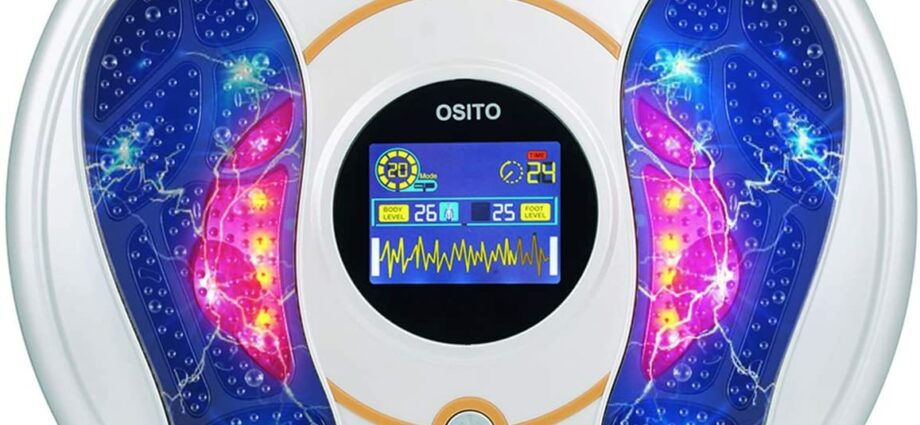A circulatory stimulator: what is it for, when to use it?
The circulatory stimulator, also called a device for stimulating blood circulation, is intended to restore venous circulation and relieve muscle pain, especially in people with reduced mobility, sedentary or performing little physical activity or people suffering from chronic diseases affecting circulation. This device uses technology that emits waves to stimulate the muscles and cause them to contract and relax, creating a pumping effect that helps blood flow back to the heart.
What is a circulatory stimulator?
The circulatory stimulator, also called blood circulation stimulation device, is a device that aims to relieve muscle pain and numbness in the legs caused by poor circulation. This medical device uses, to do this, an electrostimulation technology which diffuses waves in the muscles causing them to contract and relax. These strong muscle contractions have the effect of restoring good circulation of blood flow.
The circulatory stimulator looks like a scale that you put your feet on to receive painless electrical impulses, which stimulate blood flow, starting from the feet and moving up the entire leg, forcing the muscles to contract, as if from physical exertion. When muscles contract and relax, they create a pumping effect that helps blood flow back to the heart.
The circulatory stimulator is generally equipped with:
- a timer making it possible to control the duration of each session so as not to exceed the time required for this type of treatment, which is 20 to 30 minutes per session;
- Intensity levels: since the minimum intensity level for muscle stimulation varies from user to user, the intensity level should be gradually increased until the level that makes the muscles react ;
- electrodes to stimulate and relieve pain in other parts of the body such as the arms, shoulders or back;
- a double power supply system (mains and battery).
What is a circulatory stimulator used for?
The circulatory stimulator helps improve blood circulation and reduce some of the symptoms resulting from poor circulation, especially in:
- people with reduced mobility, sedentary or performing little physical activity;
- people suffering from chronic diseases such as hypertension, diabetes, varicose veins and venous insufficiency which affect circulation;
- the elderly with osteoarthritis ;
- some athletes with venous circulation problems, even pain and cramps in the legs and feet.
Thus, the use of a circulatory stimulator aims to:
- relieve pain in the legs as well as feelings of “heavy legs”;
- reduce swelling feet, calves and ankles ;
- relieve cramps and numbness;
- actively improve blood circulation;
- fight against venous insufficiency;
- target and relieve bodily pain;
- reduce stress;
- improve flexibility in the execution of movements.
How is a circulatory stimulator used?
HOW TO USE
- place your bare feet on the footrest of the circulatory stimulator;
- adjust the intensity level manually on the device or using the remote control;
- as soon as the contraction felt is strong and comfortable in the calf, let the stimulator act for 20 to 30 minutes.
Cons-indications
- wearing an electronic implant such as a pacemaker or an AICD (automatic cardiac defibrillator);
- treatment or symptoms related to existing deep vein thrombosis (DVT);
- pregnancy ;
- Open skin lesion or wound: dress any open wound before use;
- tissue bleeding (internal / external);
- epilepsy: do not use the electrodes in the neck area;
- tumor;
- infected tissue (including cellulitis or inflammation of the skin).
How to choose the right circulatory stimulator?
The criteria for choosing a circulatory stimulator include:
The type of device
Some devices can only relieve heavy legs and act on the venous circulation. Other, more sophisticated devices can respond to the problems of people with hypertension or diabetes.
The design of the device
Depending on the design, some devices require that the feet be tight against each other, while others allow a natural separation of a person sitting on a chair. This is a point to be taken into consideration depending on its morphology and physical capacities. In addition, the platform can be tilted allowing it to adapt to its posture.
The type of feed
Some circulatory stimulators can run on battery or batteries. These generally offer good battery life (about a week depending on the model), which can allow them to be used every day and to be installed wherever desired. Wired devices, to be connected to the mains, do not require recharging, but requires you to stay close to an outlet to be able to start the device. It should be noted that many models have been designed in order to offer the two power systems allowing the device to be used as desired.
Fonctionnalities
It is recommended to use a device that allows, ideally using a remote control, settings for the duration of the session (up to 90 minutes) as well as the intensity of the electrical stimulation. Numerous circulatory stimulators offer up to 99 different intensity levels, as well as different stimulation waveforms. Some of them also allow to work on one leg and not the other, or with a different intensity.
Practicality
Designed for use by users with reduced mobility, the circulatory stimulator must necessarily be a device that is easy to move. It is therefore recommended to favor a model whose weight does not exceed 2,5 kilograms. Some models also have a handle for easy storage.










